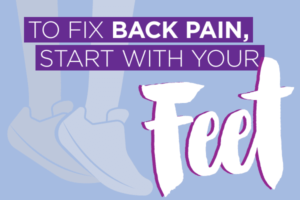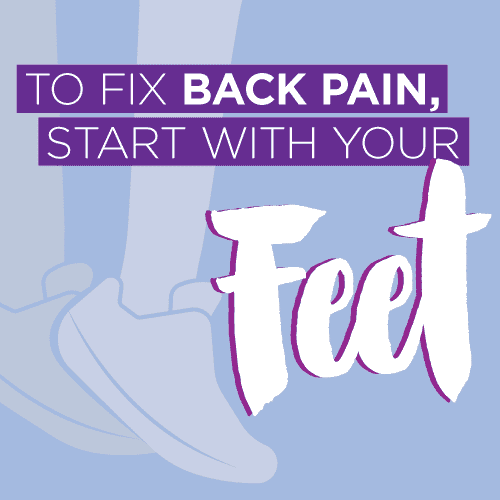Pain in your feet or ankles can change how you walk—and leave your back hurting, too.

That can mean trouble for your back.
“When people have foot pain, they often compensate by putting more weight on the unaffected leg or changing how they walk, and that throws off the mechanics of the knee, hip, and back,” says Angie Valentine, P.T., DPT, MPT, Director of Home Health and Orthopedic Program Manager for Total Joint Replacement at Summit Healthcare. “It’s important for the feet to absorb a lot of the shock when walking. When individuals limp or otherwise don’t walk normally, the back takes the brunt of the force from the ground, and they may develop back pain.”
Shoes That Counter Back Pain
Your footwear has a major effect on the health of your feet and ankles and, by extension, your back. To protect all three areas, be sure to:
- Look for flats or low heels. High-heeled shoes with pointed toe boxes put pressure on the toes that can lead to or exacerbate bunions, corns, and hammertoes, according to the American College of Foot and Ankle Surgeons (ACFAS). Heels can also change your posture and gait, to the detriment of the feet, ankles, and back. The ACFAS recommends avoiding heels taller than 2 inches.
- Only wear flip-flops in short stretches. Even the best pairs offer flimsy arch support and shock absorption.
- Measure both feet. Shop for shoes at the end of the day when your feet are most likely to be swollen. Ask the salesperson to measure both your feet. When you try on a shoe, you want about a half-inch of space between your longest toe and the end of the shoe, according to the American Orthopaedic Foot & Ankle Society. Your heel should remain snugly in place when you walk. Be sure the shoes fit your purpose, such as running or wearing to work.
- Insert support. If flat feet or high arches are a problem, an orthotic insert may help.
When to Ask for Help
If foot, ankle, or back pain keeps you from sleeping or limits your daily activities, speak with your primary care physician or an orthopedic surgeon, who may refer you for physical therapy at Summit Healthcare.
A physical therapist will look for misalignment along your body’s kinematic chain, which includes the feet, knees, and hips. If your back is in pain, the kinematic chain may hold clues as to why.
“For patients with back pain, the underlying cause may be misalignment or dysfunction in another part of the kinematic chain,” Angie says. “It’s important to look at the whole thing, not just one joint.”
Based on what the physical therapist finds, he or she will customize a plan of stretching and strengthening exercises designed to decrease pain and help you meet your goals.
“Everyone’s goal is different,” Angie says. “It could be walking across a parking lot, standing up in the morning without pain, or getting back to a sport. The key, if pain is limiting your abilities, is to seek help quickly. Joint pain is much easier to address early on than when it’s been present for a long time.”
Learn more about Summit Healthcare’s Orthopedic Center of Excellence.

